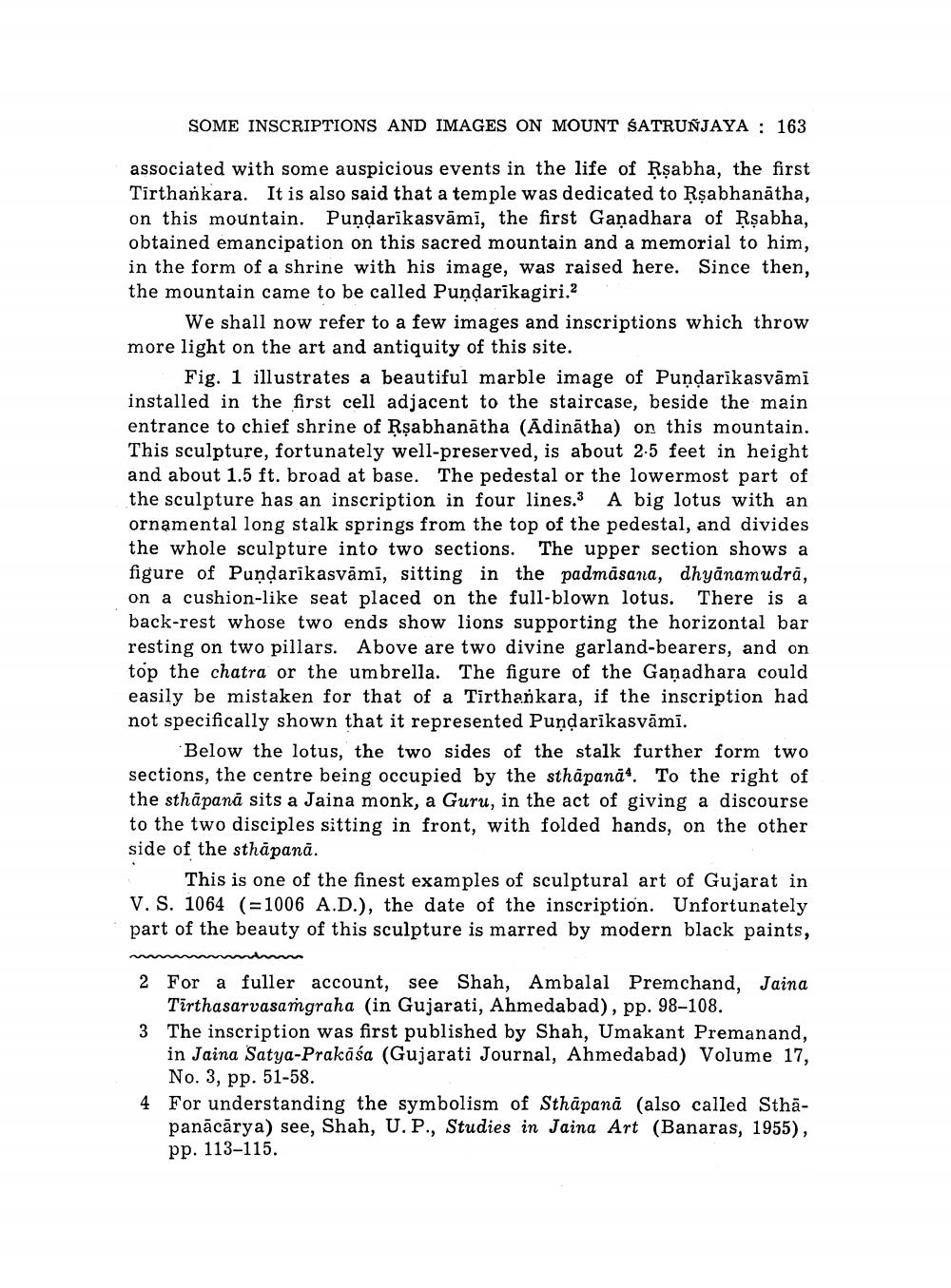Book Title: Some Inscriptions And Images In Mount Satrunjaya Author(s): Ambalal P Shah Publisher: Ambalal P Shah View full book textPage 3
________________ SOME INSCRIPTIONS AND IMAGES ON MOUNT SATRUNJAYA : 163 associated with some auspicious events in the life of Rşabha, the first Tirthankara. It is also said that a temple was dedicated to Rşabhanātha, on this mountain. Pundarīkasvāmi, the first Gañadhara of Rşabha, obtained emancipation on this sacred mountain and a memorial to him, in the form of a shrine with his image, was raised here. Since then, the mountain came to be called Puņdarikagiri.? We shall now refer to a few images and inscriptions which throw more light on the art and antiquity of this site. Fig. 1 illustrates a beautiful marble image of Pundarikasvāmi installed in the first cell adjacent to the staircase, beside the main entrance to chief shrine of Rşabhanātha (Adinātha) on this mountain. This sculpture, fortunately well-preserved, is about 2-5 feet in height and about 1.5 ft. broad at base. The pedestal or the lowermost part of the sculpture has an inscription in four lines. A big lotus with an ornamental long stalk springs from the top of the pedestal, and divides the whole sculpture into two sections. The upper section shows a figure of Pundarikasvāmi, sitting in the padmāsana, dhyānamudrā, on a cushion-like seat placed on the full-blown lotus. There is a back-rest whose two ends show lions supporting the horizontal bar resting on two pillars. Above are two divine garland-bearers, and on top the chatra or the umbrella. The figure of the Gañadhara could easily be mistaken for that of a Tirthankara, if the inscription had not specifically shown that it represented Pundarikasvāmi. Below the lotus, the two sides of the stalk further form two sections, the centre being occupied by the sthāpanā". To the right of the sthāpanā sits a Jaina monk, a Guru, in the act of giving a discourse to the two disciples sitting in front, with folded hands, on the other side of the sthāpanā. This is one of the finest examples of sculptural art of Gujarat in V. S. 1064 (=1006 A.D.), the date of the inscription. Unfortunately part of the beauty of this sculpture is marred by modern black paints, 2 For a fuller account, see Shah, Ambalal Premchand, Jaina Tirthasarvasamgraha (in Gujarati, Ahmedabad), pp. 98-108. 3 The inscription was first published by Shah, Umakant Premanand, in Jaina Satya-Prakāśa (Gujarati Journal, Ahmedabad) Volume 17, No. 3, pp. 51-58. 4 For understanding the symbolism of Sthāpanā (also called Sthā panācārya) see, Shah, U.P., Studies in Jaina Art (Banaras, 1955), pp. 113-115.Page Navigation
1 2 3 4 5 6 7 8 9 10 11 12
